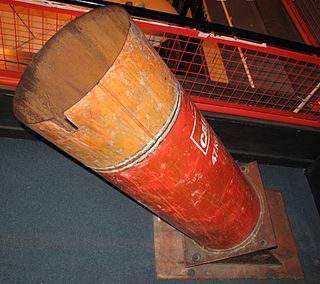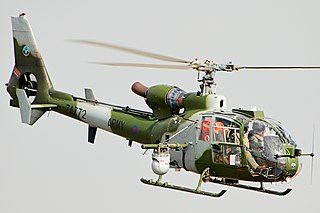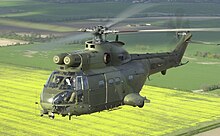
The East Tyrone Brigade of the Provisional Irish Republican Army (IRA), also known as the Tyrone/Monaghan Brigade was one of the most active republican paramilitary groups in Northern Ireland during "the Troubles". It is believed to have drawn its membership from across the eastern side of County Tyrone as well as north County Monaghan and south County Londonderry.
This is a chronology of activities by the Provisional Irish Republican Army (IRA) from 1970 to 1979.

The South Armagh Brigade of the Provisional Irish Republican Army (IRA) operated during the Troubles in south County Armagh. It was organised into two battalions, one around Jonesborough and another around Crossmaglen. By the 1990s, the South Armagh Brigade was thought to consist of about 40 members, roughly half of them living south of the border. It has allegedly been commanded since the 1970s by Thomas 'Slab' Murphy who is also alleged to be a member of the IRA's Army Council. Compared to other brigades, the South Armagh IRA was seen as an 'independent republic' within the republican movement, retaining a battalion organizational structure and not adopting the cell structure the rest of the IRA was forced to adopt after repeated intelligence failures.

Barrack buster is the colloquial name given to several improvised mortars, developed in the 1990s by the engineering unit of the Provisional Irish Republican Army (IRA).

On 13 December 1989 the Provisional Irish Republican Army (IRA) attacked a British Army permanent vehicle checkpoint complex manned by the King's Own Scottish Borderers (KOSB) near the Northern Ireland–Republic of Ireland border at Derryard townland, a few miles north of Rosslea, County Fermanagh. The IRA unit, firing from the back of an armoured dump truck, attacked the small base with heavy machine-guns, grenades, anti-tank rockets and a flamethrower. A nearby Army patrol arrived at the scene and a fierce firefight erupted. The IRA withdrew after leaving a van bomb inside the complex, but the device did not fully detonate. The assault on the outpost left two soldiers dead and two wounded.
This is a timeline of actions by the Irish republican paramilitary groups referred to as the Real Irish Republican Army and New Irish Republican Army. The Real IRA was formed in 1997 by disaffected members of the Provisional IRA. Since July 2012, when Republican Action Against Drugs (RAAD) and other small republican groups merged with it, the group has been called the New IRA; although it continues to call itself simply "the Irish Republican Army".
This is a chronology of activities by the Provisional Irish Republican Army (IRA) from 1980 to 1989. For actions before and after this period see Chronology of Provisional Irish Republican Army actions.
This is a chronology of activities by the Provisional Irish Republican Army (IRA), from 1992 to 1999.

On 19 March 1994, a British Army Lynx helicopter was shot down by the Provisional Irish Republican Army (IRA) in Northern Ireland. A unit of the IRA's South Armagh Brigade fired a heavy improvised mortar at the British Army base in Crossmaglen, County Armagh. The mortar round hit and shot down the helicopter, serial number ZD275, while it was hovering over the helipad. Three British soldiers and a Royal Ulster Constabulary (RUC) member were wounded.

On 11 February 1990, an active service unit of the Provisional IRA East Tyrone Brigade shot down a British Army Gazelle helicopter along the border between Northern Ireland and the Republic of Ireland. It took place between Augher in County Tyrone and Derrygorry in County Monaghan. The helicopter was hit several times by heavy machine-gun fire and crash-landed on an open field, injuring three members of its crew of four.

On 17 February 1978, a British Army Gazelle helicopter, serial number XX404, went down near Jonesborough, County Armagh, Northern Ireland, after being fired at by a Provisional IRA unit from the South Armagh Brigade. The IRA unit was involved at the time in a gun battle with a Green Jackets observation post deployed in the area, and the helicopter was sent in to support the ground troops. The helicopter crashed after the pilot lost control of the aircraft whilst evading ground fire.

The Battle of Newry Road was a running gun battle between British Army helicopters and Provisional Irish Republican Army (IRA) armed trucks, fought along the lanes east of Crossmaglen, County Armagh, on 23 September 1993. The engagement began when an IRA motorized team from the South Armagh Brigade attempted to ambush three helicopters lifting off from the British Army base at Crossmaglen, one of them carrying the 3rd Infantry Brigade Commander.
This is a timeline of actions by the Official Irish Republican Army, an Irish republican & Marxist-Leninist paramilitary group. Most of these actions took place as part of a Guerrilla campaign against the British Army & Royal Ulster Constabulary and internal Irish Republican feuds with the Provisional IRA & Irish National Liberation Army from the early 1970s - to the mid-1970s during the most violent phase of "the Troubles" in Northern Ireland.
The following is a Timeline of British Army and Royal Ulster Constabulary (RUC) undercover operations during Operation Banner during the 1969 – 1998 Northern Irish conflict in Northern Ireland that resulted in death or injury. Including operations by the SAS, 14 Intelligence Company, the Military Reaction Force (MRF), RUC Special Patrol Group and Special Branch.

On 23 June 1988, an Army Air Corps (AAC) Westland Lynx, serial number XZ664, was shot down by the Provisional Irish Republican Army (IRA) near Aughanduff Mountain, County Armagh, in Northern Ireland. A unit of the IRA's South Armagh Brigade fired at the British Army helicopter using automatic rifles and heavy machine guns. The disabled helicopter was forced to crash-land in an open field; the aircraft and its crew were eventually recovered by British forces.

Throughout the protracted conflict in Northern Ireland (1960s-1998), the Provisional IRA developed a series of improvised mortars to attack British Army and Royal Ulster Constabulary (RUC) security bases. The organisation also purchased both light and heavy machine guns in order to hamper the British Army supply of border bases by helicopter. The IRA fitted vehicles, specially vans and trucks, with both types of weapons. Vans, trucks and tractors were modified to transport concealed improvised mortars to a launch area near the intended target and fire them, while light and heavy trucks were employed as firing platforms mounting machine guns, particularly M60s and DShKs. Improvised armoured vehicles and heavy equipment were also used to penetrate the perimeter of fortified security bases. The IRA vehicles were often disguised as belonging to civilian companies or even government agencies.

On 12 December 1993, a unit of the Provisional Irish Republican Army's (IRA) East Tyrone Brigade ambushed a two-men unmarked mobile patrol of the RUC in Fivemiletown, County Tyrone. Two constables were shot and killed instantly. A military helicopter was also fired at by a second IRA unit in the aftermath of the incident, during a follow-up operation launched in the surroundings of the town by both the British Army and the RUC. A number of suspects were questioned, but the perpetrators made good their escape. The action occurred just three days before the Downing Street Declaration.
This is a chronology of activities by the Provisional Irish Republican Army (IRA), in 1990 and 1991.

On 13 February 1991, an Army Air Corps (AAC) Westland Lynx Mk7, serial number ZE380, was shot down by the Provisional Irish Republican Army (IRA) in the vicinity of Crossmaglen, County Armagh, in Northern Ireland. The IRA's South Armagh Brigade ambushed the aircraft while approaching the joint British Army-RUC base in Crossmaglen using automatic rifles, general-purpose machine guns and heavy machine guns. The heavily damaged helicopter was forced to crash-land in an open field; the aircraft and its crew were eventually recovered by British forces.

The Killeeshil ambush took place on 15 July 1994, when an armour plated vehicle of the Royal Ulster Constabulary (RUC) was intercepted by a tipper lorry driven by a Provisional IRA active service unit from the East Tyrone Brigade and riddled with automatic rifle fire while travelling on the Dungannon Road at Killeeshil crossroads, in southern County Tyrone, Northern Ireland. Three members of the RUC were wounded, as well as a Sinn Fein councillor from Clones, Republic of Ireland, who by chance had been arrested earlier at the Irish border and was being transported to Belfast. An elderly female motorist was also wounded. The action occurred a few weeks before the IRA ceasefire of August 1994.













